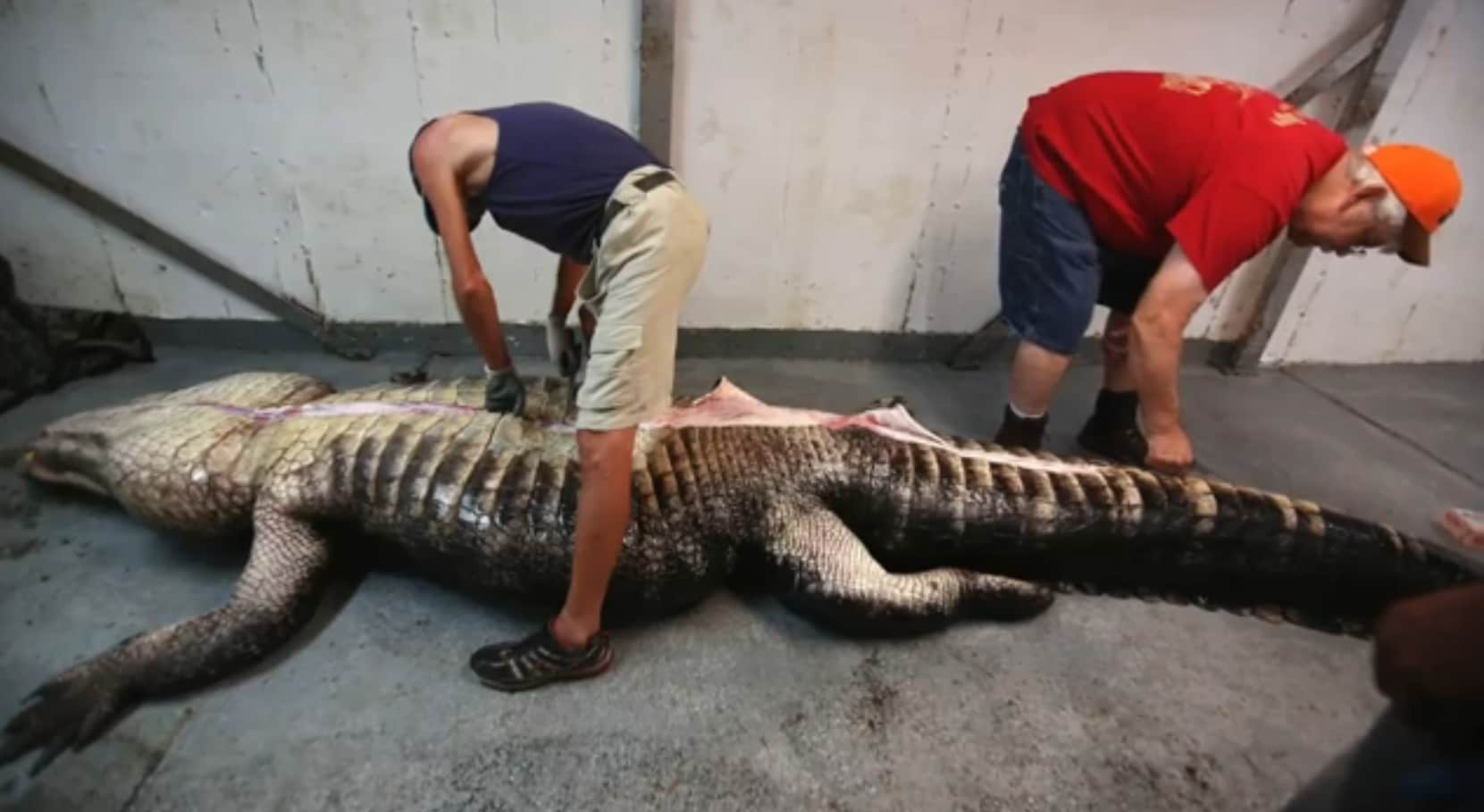Intact Deer Found Inside 1,000-pound Alabama Alligator
OutdoorHub Reporters 08.25.14

On August 16, a family of hunters in Alabama harvested a massive 1,011.5-pound alligator near Millers Ferry Dam in Wilcox County. The reptile was large enough to claim the Alabama state record and make a run for the title of the world’s heaviest, but what taxidermists found inside the alligator’s stomach may be even more surprising. According to AL.com, taxidermist Ken Owens was preparing the large animal for a full-body mount when he discovered a partially-digested, yet intact three-year-old doe inside the reptile’s gut.
“I always thought that once an alligator killed something that it ate it a piece at a time,” Owens said. “I can’t imagine how it got ahold of that adult deer and ate it in one piece like that. It’s unbelievable.”
Owens estimated the doe’s age from what was left of the deer’s lower jawbone. The average weight of a mature Alabama doe can reach well past 100 pounds, so it was no bite-sized snack for even this mammoth alligator. The taxidermist said he also found some digested squirrels, bird bones, and even evidence that the reptile may have eaten a cow. Owens was also surprised to see some greenery in the gator’s stomach.
Although the American alligator is typically seen as an apex predator that eats just about any critter unlucky enough to be within reach, scientists say the reptiles also eat fruits and vegetables whenever they can. Recent research shows that alligators and other crocodillian species will consume berries, fruits, and sometimes even grass if other food is not available. In any case, larger animals such as deer and feral hogs are not usually part of an alligator’s diet, which generally consist of muskrats, raccoons, and other small mammals. Bigger alligators can target larger prey, and a very fast-acting form of stomach acid helps them digest big bones. A 2008 study showed that alligators are capable of shunting off blood from their lungs toward their stomachs, which increase gastric acid production and allows the animal to digest food more rapidly.
“In my experience, the hair and some of the skin would have been gone on that deer within the first 36 hours,” Kent Vliet, a biologist at University of Florida, told AL.com.
As far as last meals go, a stomach full of venison is fitting for what may be world’s largest hunter-harvested alligator. Mandy Stokes was hunting with her husband, her brother-in-law, and her brother-in-law’s children earlier this month when they encountered the animal. It took five hours of battle between the hunting party and the alligator before Stokes was able to dispatch it with a shotgun. The family stated that they will be donating the meat to local churches for their annual wild game banquets, while the mount is expected to be ready in several weeks. Safari Club International, the organization that documents world records for alligators and other big game, is currently in the process of reviewing Stokes’s application.
You can see a video of Ken Owens skinning the alligator below:
[warning_graphic_video]

